I was thinking the other day in a desert Island moment what my special selection would have to be. No mean feat considering you are nailing your colours to the mast and leaving a legacy by which you could be judged! Well, here goes. The luxury item would be a fishing rod and reel (don’t make me choose – it’s not fair). My record would be Maggie May by Rod Stewart and as for the book, the Deepening Pool by the living deity, Chris Yates.
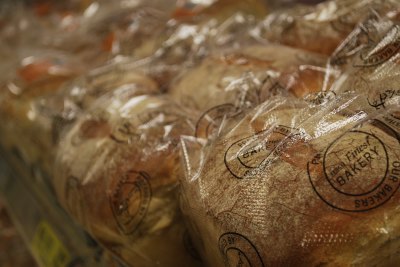 Now those little thoughts probably caused me a lot of distress and took far too much of a ‘sane’ mans thinking processes than I care to admit. Now if I had to choose a single bait it would have been a much simpler choice. It would have to be bread! But not to deny myself the challenge of a single bait, it dawned on me that perhaps my choosing bread was a sly notion. Can bread really be considered a single type of bait?
Now those little thoughts probably caused me a lot of distress and took far too much of a ‘sane’ mans thinking processes than I care to admit. Now if I had to choose a single bait it would have been a much simpler choice. It would have to be bread! But not to deny myself the challenge of a single bait, it dawned on me that perhaps my choosing bread was a sly notion. Can bread really be considered a single type of bait?
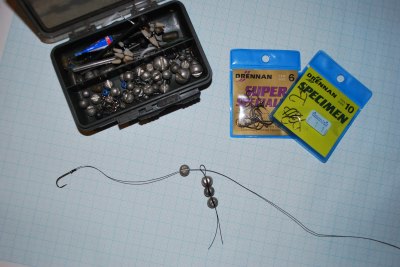 Bear with me a moment, are we talking about a product that has vaguely been made from the same type of ingredients for eons? Well OK, on consulting the Bible of modern English language (though in miniature ‘Little’ form) the Oxford dictionary definition of bread states: ‘bread/bred/n.food of baked dough of flour usu. Leavened with yeast’. Cheap, easy to get hold of and extremely versatile – but in my opinion, this is probably one of the most underused of baits of all our baits.
Bear with me a moment, are we talking about a product that has vaguely been made from the same type of ingredients for eons? Well OK, on consulting the Bible of modern English language (though in miniature ‘Little’ form) the Oxford dictionary definition of bread states: ‘bread/bred/n.food of baked dough of flour usu. Leavened with yeast’. Cheap, easy to get hold of and extremely versatile – but in my opinion, this is probably one of the most underused of baits of all our baits.
I wonder whether this could be down to a general suspicion of the mighty white stuff, perhaps a doubt that it could hold on the hook sufficiently long for our quarry to locate. Could it be our apparent addiction to more technologically based offerings that guarantee a controlled break-down of attraction with a field-tested nutritional profile. No one can question the logic of taking a few pints of maggots, casters, corn or the dark oily kernels of that most magic of attractants, hemp. I don’t know the answer, but it does offer the question, can you really afford to go fishing without bread? What I shall attempt to do is write a short treatise, a celebration if you like of the mighty white! By sharing a few tricks of the trade, I throw open the challenge – can you really afford not to use your loaf? Is all bread the same?
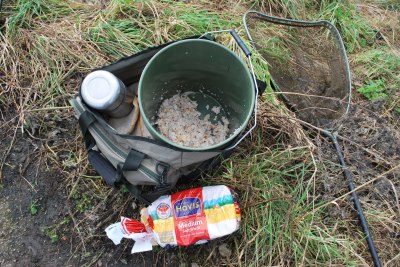 The white crusty bloomer:
The white crusty bloomer:
The baked-on-the-premises crusty bloomer is the mainstay of much of my static fishing for chub in the winter, accounting for a number of decent specimens. In truth, the majority is wasted, or indeed eaten by myself as it is only the outer crust that holds any appeal to me as an angler. Though in its fresh form it is practically useless, as the crust is too brittle and difficult to place a hook without it breaking out on the cast, or in-deed, just washing off the hook.
Preparation could not be simpler; it just needs to be left for a few days to go stale. I know of anglers that like to flavour their crust by coating the inside of a bag with a chosen flavour and placing the loaf into the bag. The porous crust does take on flavour very well, but I seldom feel the need to tamper, preferring it’s natural appeal. The stale crust is transformed; it gains a tough rubbery texture that can be torn easily, but flexible enough to negotiate a hook – it casts really well and isn’t going anywhere. It has an inherent buoyancy that I feel adds to its versatility, though needs to be considered when tackling up.
In the summer months bread crust is a surface bait par excellence, just a size 6 hook to 6lb line, a quick dunk in the water to add some casting weight and send it idling downstream towards the tangled sanctuary of old ‘logger head’ and you won’t be disappointed. Perhaps it should be considered in the front line armoury for the surface carp angler as an alternative to the obvious floating dog mixer biscuit. Bread crust is simply an awesome carp bait that has so much going for it! I love the way that hoards of little rude and fry attack the fluffy underside of the crust sending cascades of tiny particles to waft around drawing the carps attention to what can only appear a safe morsel. Just imagine, no more super-gluing floaters to the shank of a hook or hair rigging. As for the hook? You can use a sensible sized hook because it is concealed within the bait itself and pulls out easily on the strike.
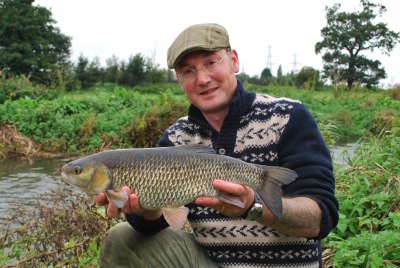 A point that needs to be considered when floater fishing bread is the timing of the strike. It is always best to give a fish what seems like a lifetime before striking! Both chub and carp will take crust very confidently, just allowing the fish a little time to turn helps guide the hook home on striking and will result in more hook ups.
A point that needs to be considered when floater fishing bread is the timing of the strike. It is always best to give a fish what seems like a lifetime before striking! Both chub and carp will take crust very confidently, just allowing the fish a little time to turn helps guide the hook home on striking and will result in more hook ups.
The classic presentation of bread crust is the link ledger. It is simplicity itself, the job of the weight is to enable casting, but should be balanced so that the bait is just holding bottom. The bread crust can be likened to a pop-up bollie. A swan shot 3-4 inches from the hook helps to suspend the crust at a fixed height from the river bed and is about ideal. I like to imagine the crust wafting enticingly in the current, taunting the chub to make its move. Bites tend to be a very positive affair, much because the chub needs to nail the moving target or perhaps just simply out of frustration! As for tackle, a reel spooled with 6lb line and any quiver type rod. I am still using my old John Wilson Avon quiver – now in its twelfth year of loyal service.
Sliced white bread:
We probably all have an opinion on this one, but for me it has to be Hovis medium white slice bread in the orange wrapper – the softest, freshest loaf I can find! It has the perfect doughy consistency that lends itself to a multitude of uses. It is one of the more expensive brands, but I will only ever buy one loaf and as it only serves the purpose of staying on the hook, it will last all day. The bread I use for free feeding will be the cheapest brand I can lay my hands on.
Of course sliced white bread is a deadly bait for ledgering; simply pinch a piece of flake about the size of a new ten pence piece around the shank of a size 10 hook, taking care not to obscure the hook point, and it will remain anchored to the hook for at least 15 minutes. The fact that the flake fluffs up concealing the business end of our deception can only add to the confidence.
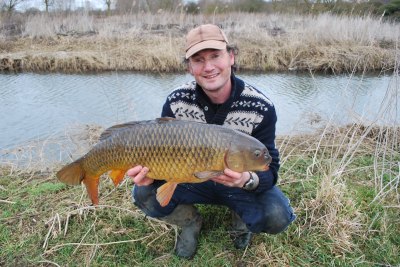 But for me, my favourite method has to be long trotting.
But for me, my favourite method has to be long trotting.
If there is a little colour in the water and a reasonable flow, trotted bread-flake takes some beating. A heavy 4 swan loafer float does the trick. Simply bulk the shot about 10 inches from a size 6 or 8 hook, with a single swan dropper shot about 4 inches from the hook. Typically, I will use a 4lb line straight through to the hook.
A problem with float fishing large flake chunks is its buoyancy; this can be overcome by wrapping a piece of lead wire around the shank of the hook, thus improving the presentation dramatically! Bites are usually pretty instant.
I tend to fish smaller rivers, so for me it is a mobile approach. I find it is best to start as far upstream as I am prepared to walk and then fish swims as I travel back towards my van. Allowing half an hour per swim, I tend to feed small handfull’s of sloppy bread mash on a little and often basis to build up the swim and then trot the flake down the same line as the free falling particles.
With a constant trail of bread going downstream, it is not uncommon to have fish take the bait anything from 30 yards downstream or indeed just off the rod tip as they follow the source of the bread. Setting the depth does not seem to be an exact science as I am sure that chub will come up in the water to intercept the bread, even in winter. Set the float at approximately half depth and then you can change deeper or shallower to find out what they want on the day. I have always found this method to be most effective when the river is fining down after a flood and still holding a little colour. It is quite a crude method in many ways and usually entails very positive sail away bites – heart stopping stuff!!
I had a particularly memorable session last year on the last day of the season where I hooked a carp at the end of a long trot downstream to a bend. Initially, on striking I could only assume that I had hooked a sunken weed bed. I cussed and attempted to pull out of the snag only for an immense tail to break surface. My initial thoughts on feeling the surge of power was what size Barbour jacket I might be in for when I claimed the new chub record! It quickly materialised into a carp that took me on a very long walk downstream, such was the control I had on 4lb line and a 20ft trotting rod. Half an hour later and a gathering crowd of dog walkers and a very bemused looking angler, it finally succumbed. At 18lb7oz I think it demonstrates nicely the versatility of bread…….
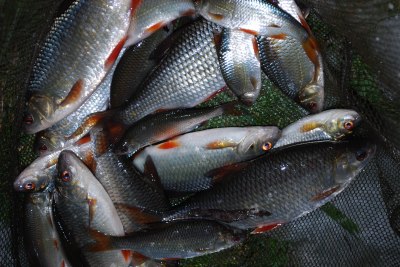 Bread punch:
Bread punch:
I could never dream of roaching without my bread punches!
Often thought of as the preserve of the matchman, bread punch is devastatingly effective for specimen roach, bream and chub of all sizes. When ledgering for roach I carry a range of punches varying in size from the miniscule 2mm right up to the Drennan bread punches that land a wallop of pear shaped bread onto a size 10 hook. To keep bites coming it may be necessary to change hook size and the length of hook material many times during a session to connect with rattles on the quiver.
One of the elements of roach fishing that I most adore is that it is akin to a piscatorial game of chess. Firstly, you have to anticipate the movement of a shoal of roach and of course the position and movements of the major players – the elusive specimens that dreams are made of. To make matters more complicated, specimen roach tend to move around in their own little pods, no doubt remnants of a once mighty shoal of smaller individuals. To further complicate matters, the roach can be a finicky feeder at best, requiring a range of strategies that keeps the angler on his toes. Match this with the tireless drive and desire to capitalise on the rare windows of opportunity that constitute ideal conditions – you can see why specimen roach captures are rare!
Preparation of bread for punching really couldn’t be simpler; place the slice of soft medium white bread in the microwave for about 20 seconds and then place into an airtight plastic bag. This produces bread with a lovely doughy texture that punches well and stays on the hook. On my less prepared days, a very fresh loaf of medium white still does the trick but is far inferior. The beauty of punch bread is that it can be used for float fishing or ledgering!
Preparing bread for pre-baiting.
Bread mash: It is always best to use the cheapest possible sliced white for mashing as it should always be allowed to go stale overnight in the bucket. For me, bread mash used to be a very standard affair. A bucket of stale bread soaked in river water, drained and then mashed by hand.
The only problem with preparing bread in this way is that a bucket of mashed bread is incredibly heavy to lug around from swim to swim. I now prefer to make mashed bread in small batches by soaking a few slices in the landing net in the margins. It is possible to make mash of different consistencies depending on the method. When long trotting bread, I prefer a mash that is quite sloppy so that it sinks quite slowly, drawing fish towards the feeding zone. For baiting-up swims for ledgering, I favour a mash that will sink quickly whilst still breaking down, sending particles downstream in the current. This can be achieved by draining the bread in the net and the giving it a hard squeeze to get rid of all the excess water.
Liquidised bread:
Liquidised bread allows a small amount of bait to be deposited when ledgering punched bread or where you want to control the amount of feed going into a swim.
Take fresh sliced bread, cut off the crusts and discard. Whizz a few slices at a time in the liquidiser and store in a plastic bag. For slower paced or shallow rivers, it is best to gently squeeze the liquidized crumb into a wire cage feeder so that it can swell and disperse where you want it. On deeper swims or faster flowing rivers I prefer the closed feeders to ensure it gets down to where I want it.
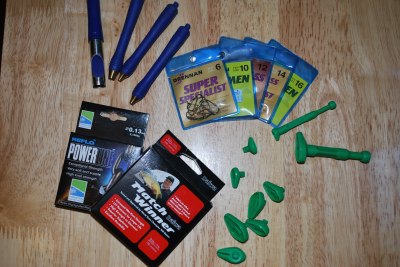 Adding flavours:
Adding flavours:
To make the mash or liquidised crumb even more attractive it is possible to add flavours and colours. Of the more effective types I have found, adding puréed garlic from the tubes found in supermarkets into mashed bread and, for crumb, adding a little aniseed-based groundbait enhancer. In particular, the aniseed additive has proved to be one of my favourites and has accounted for stunning roach sport. The list of flavours must be endless! But I am just as happy to use bread in its natural form.
I have a theory about heavily flavouring baits like bread and luncheon meat. Initially a flush of success is met by complete contempt. It is almost like the fish that have sampled my wares communicate a suspicion of the flavour to the rest of the fish in the river and then it barely gets a bite as the season proceeds. My experience (or perception) is that an unflavoured bait will out fish a flavoured one in the long term!
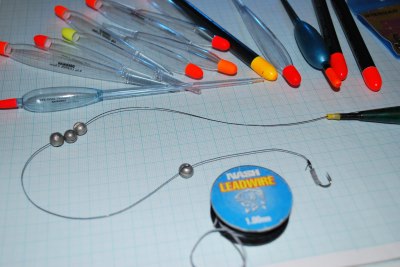 Magic bread
Magic bread
I hope that gives you a little insight into this under-rated, under-used super-bait! Have I justified bread as the Desert Island bait? I don’t know. Can I use a bread-caught roach for a pike bait? Or is that not really how this deal works? Anyway, I digress. I strongly suspect that little I have written here is new and many of you have your own little tips that you are keen to share, well that would be very much in the spirit of the thing!
But fishing the other day – I had plenty of time to contemplate as the fish weren’t biting – I had to consider what makes bread such a super bait? It does not exactly represent anything that a fish would find in its natural diet and yet it has an almost instant appeal. The answer was to come in a most unexpected manner.
I was preparing my mash in the net at the margins, on lifting the net I was met with a beautiful sight. A sparkling mass of tiny silver shards, bright and alive – the greedy masses of this years fry had descended upon my soaking bread. Like sparkling gems, I had to ensure each precious individual was returned to continue on with its uncertain future.
‘Goodbye little fellow! Take care, stay in the slacks and shadows, grow strong and perhaps we shall meet again sometime and share a feast of bread’!
Christian Barker (Chav Professor)










